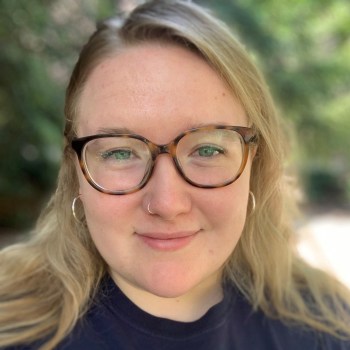PhD Candidate Rackham Merit Fellow
Location
Climate & Space Research Building 2455 Hayward Street Ann Arbor, MI 48109-2143
Education
Bachelor of Science in Physics & Astronomy and Interdisciplinary Studies with Minor in Arabic, Emory University, May 2018
Research Interests
- pulsating aurora and theta aurora
- magnetosphere-ionosphere coupling
- wave-particle interactions in the magnetosphere
Biography
Shannon Hill is a PhD candidate at the University of Michigan. Her current research involves inner magnetosphere-ionosphere coupling with a focus on wave-particle interactions and the aurora. Her research background includes an REU program at Auburn University and two summers of research at NASA Goddard Space Flight Center, during which she gained experience with inner magnetosphere simulations and analysis of satellite observations. Her recently published work, “Local Heating of Oxygen Ions in the Presence of Magnetosonic Waves: Possible Source of the Warm Plasma Cloak?”, explores thermal ion heating due to wave resonance along the plasmapause. In her free time, Shannon enjoys singing with GradTONES, the graduate school acapella group, and is proud to serve on the board of her housing cooperative.
Publications
Hill, S., Buzulukova, N., Boardsen, S., Fok, M.-C. (2020). Local heating of oxygen ions in the presence of magnetosonic waves: Possible source for the warm plasma cloak?. Journal of Geophysical Research: Space Physics, 125, e2019JA027210. https://doi.org/10.1029/2019JA027210
Perez, J, Edmond, J., Hill, S., Xu, H., Buzulukova, N., Fok, M.-C., Goldstein, J., McComas, D., & Valek, P. (2018). Dynamics of a geomagnetic storm on 7–10 September 2015 as observed by TWINS and simulated by CIMI. Annales Geophysicae. 36. 1439-1456. 10.5194/angeo-36-1439-2018.
